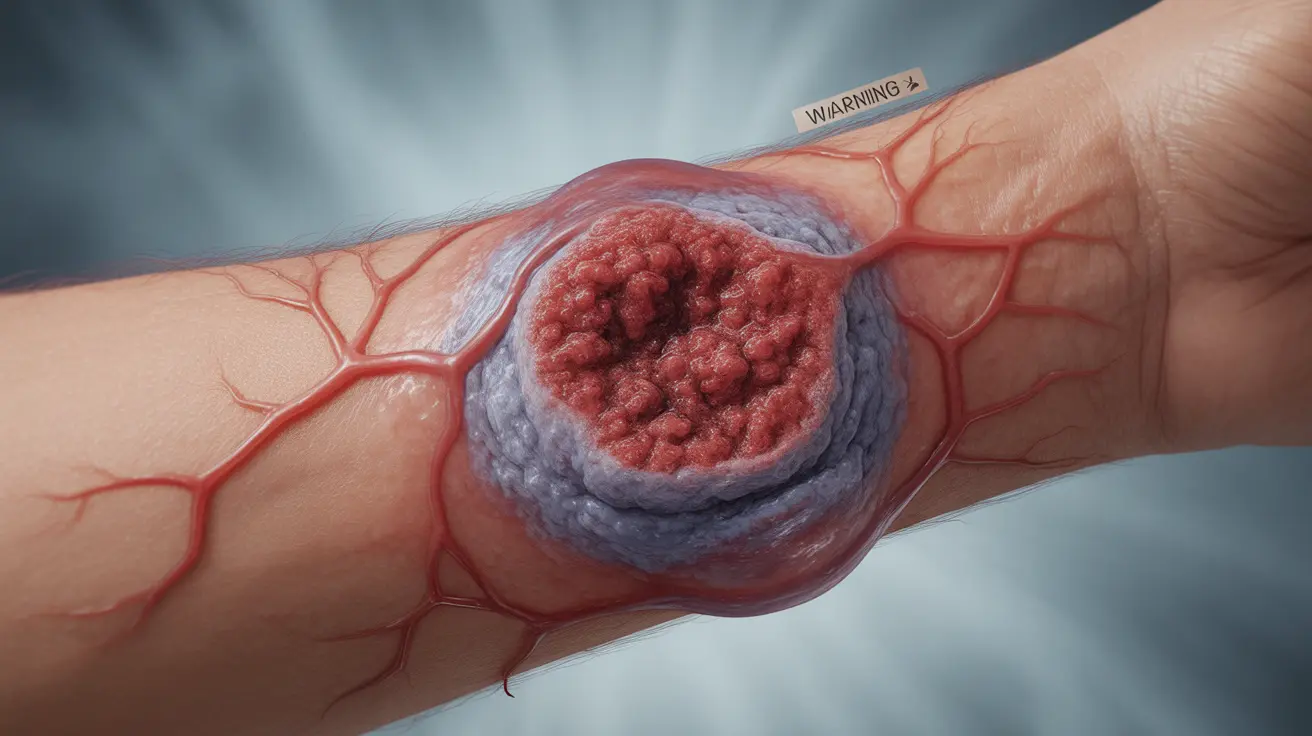Blood clots are serious medical conditions that can form in various parts of the body, potentially leading to life-threatening complications if left untreated. Understanding where blood clots can develop, recognizing their symptoms, and knowing when to seek medical attention are crucial for maintaining good health and preventing severe outcomes.
This comprehensive guide explores the different locations where blood clots can form, their distinct symptoms, and the various treatment approaches healthcare providers may recommend.
Common Blood Clot Locations and Their Symptoms
Deep Vein Thrombosis (DVT) in the Legs
The legs are one of the most common sites for blood clots to develop, particularly in the deep veins. When this occurs, it's known as Deep Vein Thrombosis (DVT). Common symptoms include:
- Swelling in one leg
- Warmth in the affected area
- Redness or discoloration
- Pain or tenderness, especially when standing or walking
- Visible surface veins
Upper Extremity Blood Clots
Blood clots can also form in the arms, though this is less common than leg clots. These typically develop in the deep veins of the upper extremities and may cause:
- Swelling in the affected arm
- Unusual warmth
- Pain or aching
- Skin discoloration
- Limited range of motion
Pulmonary Embolism
A particularly dangerous situation occurs when a blood clot breaks free and travels to the lungs, causing a pulmonary embolism. Symptoms include:
- Sudden shortness of breath
- Chest pain that worsens with deep breathing
- Rapid heartbeat
- Coughing, sometimes with bloody mucus
- Lightheadedness or fainting
Risk Factors and Prevention
Several factors can increase your risk of developing blood clots:
- Extended periods of immobility
- Recent surgery or injury
- Obesity
- Smoking
- Hormonal medications
- Pregnancy and postpartum period
- Certain medical conditions
Preventive Measures
Taking proactive steps to prevent blood clots is essential, especially if you have risk factors:
- Stay active and maintain regular movement
- Wear compression stockings when recommended
- Stay hydrated
- Move regularly during long trips
- Follow medication schedules as prescribed
- Maintain a healthy weight
Treatment Approaches
Treatment for blood clots typically involves:
- Anticoagulant medications (blood thinners)
- Regular monitoring of blood clotting levels
- Lifestyle modifications
- In some cases, surgical intervention
- Follow-up care and prevention strategies
Frequently Asked Questions
What are the symptoms of a blood clot in the leg, and how is it treated?
Symptoms of a leg blood clot include swelling, warmth, pain, and skin discoloration. Treatment typically involves blood-thinning medications (anticoagulants), possibly starting with injectable heparin followed by oral medications like warfarin or newer anticoagulants. Regular monitoring and following prescribed treatment plans are essential.
Can a blood clot in the arm cause serious health problems, and what are the symptoms?
Yes, arm blood clots can be serious. Symptoms include swelling, pain, warmth, and skin changes in the affected arm. These clots can potentially break free and travel to the lungs, causing a dangerous pulmonary embolism. Immediate medical attention is necessary if symptoms occur.
What are the common risk factors for developing blood clots in different parts of the body?
Common risk factors include prolonged immobility, recent surgery, obesity, smoking, hormonal medications, pregnancy, and certain medical conditions like cancer or blood disorders. Age, family history, and lifestyle factors also play significant roles in blood clot development.
How can I prevent blood clots from forming during long trips or periods of prolonged inactivity?
Prevention strategies include regular movement (walking or leg exercises), staying hydrated, wearing compression stockings, and taking frequent breaks to stretch and move during long trips. For high-risk individuals, medication may be prescribed as a preventive measure.
What is the difference between a venous blood clot and an arterial blood clot, and how are they treated?
Venous blood clots form in veins and typically develop slowly, while arterial clots form in arteries and cause immediate symptoms. Venous clots are usually treated with blood thinners, while arterial clots often require immediate medical intervention, including possible surgical removal or clot-busting medications.




